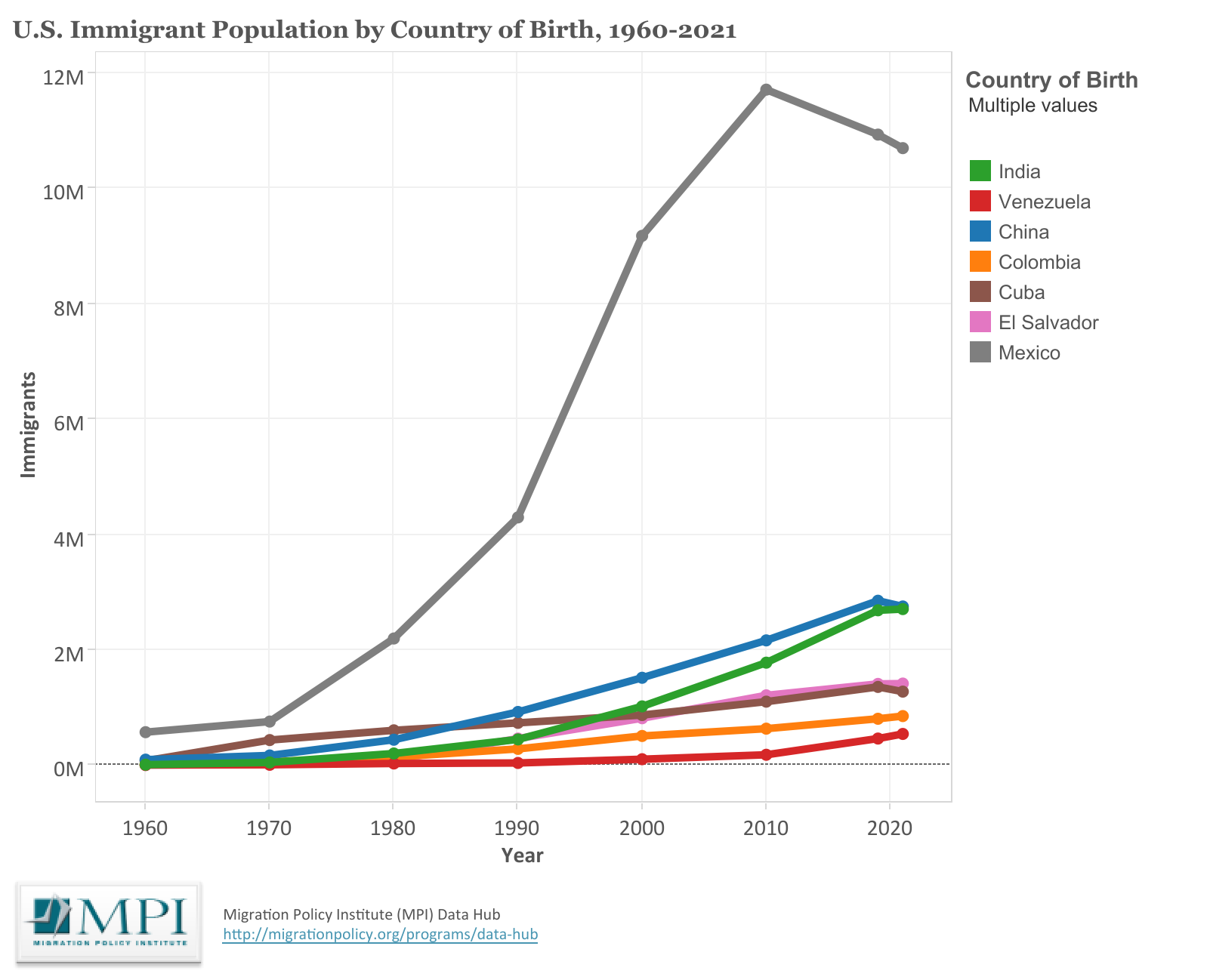Help wanted signs, which became a frequent sight in restaurant and shop windows by the end of 2020, are still common fixtures throughout the nation. A recent article in the Wall Street Journal focused on the growing number of employers who are finding employees in migrant communities.[1] The article highlighted the stories of several immigrants who came to the United States from Latin America after hearing about a high-paying job on social media. Some intend only to work in the United States for a few years, saving their earnings to invest in a new business enterprise in their home country upon their return. Anecdotal evidence shows that the wage gap between domestic workers and immigrants has narrowed. Employers are paying high wages and offering large money bonuses to anyone willing to work, and immigrants are currently keeping many U.S. businesses afloat.
These stories led to me to investigate some of the government databases typically used to track trends in employment and immigration. Do we see evidence of rising employment in service and construction industries? Do we see increasing immigration in the population counts?
Figure 1 shows recent trends in the number of workers employed in construction, service industries, agriculture, and manufacturing. Data come from the Bureau of Labor Statistics. I selected only industries that traditionally hire large shares of immigrants with relatively little education. Employment in the service industry took a dive during the lockdowns 2020 but has grown steadily since. It is now similar to pre-pandemic levels, and employment in construction, agriculture, and manufacturing changed very little from 2018 to 2022.

(Data Source: Bureau of Labor Statistics)
Why are employers having difficulty finding workers? The answer to this question is still somewhat elusive. Many workers quit their jobs in 2020 in what was coined the “great reassessment”. Workers are reassessing their career goals and work preferences. Workers might be choosier than they were before the pandemic, and apparently, they can afford to be. Although employment growth was sluggish in the latter half of 2022, the unemployment rate is currently only 3.4%, the lowest it has been in more than 53 years.[2]
Has the historically low unemployment rate, along with high wages and offers of money bonuses in entry-level jobs, attracted more immigrants to the United States? The primary source of data on U.S. population and migration is the American Community Survey (ACS). The ACS randomly selects households to participate in the survey each year, so that we can track population trends between censuses. Figure 2 plots the number of immigrants by country of origin from 1960-2021. This figure comes from the Migration Policy Institute and is based on a combination of data from the ACS and U.S. Censuses (2020 was excluded due to poor representation of sampling during the pandemic). Notably, Mexico is the primary source of immigrants to the United States, but the number of immigrants from Mexico has been declining since 2010. Although we hear about increasing border traffic since the start of 2021, we do not observe a sizable increase in immigration from Latin America in the ACS.

Figure 2: Immigrant Populations (Source: Migration Policy Institute)
Is the ACS, which has been our primary source of data on immigration for many years, able to adequately sample and count immigrant populations? To the extent that immigrants often live in dense living quarters, the ACS might not sample sufficient immigrant households to accurately count their population, or people living in dense living quarters might systematically underreport the number of people residing at their address. Immigrant populations might be more mobile and thus underreported in the sample selection. Bottom line: the data do not tell the same story as the anecdotes. Are the anecdotes misleading, or do we need to reconsider the ways in which we collect immigration data to get more accurate counts?
[1] Pérez, Santiago and Hackman, Michelle (Feb 7, 2023) “U.S. Business Owners Pay Premium to Hire Migrant Workers in Extremely Tight Labor Market” The Wall Street Journal. https://www.wsj.com/articles/migrants-are-doing-better-than-ever-thanks-to-tight-labor-market-11675784935?mod=hp_lead_pos8
[2] Harrison, David (Feb. 3, 2023) “Unemployment Falls to 3.4%, Lowest in 53 Years, Job Report Shows” The Wall Street Journal. https://www.wsj.com/articles/january-jobs-report-unemployment-rate-economy-growth-2023-11675374490?page=1

